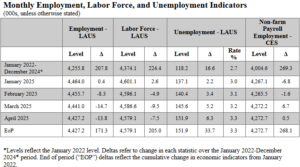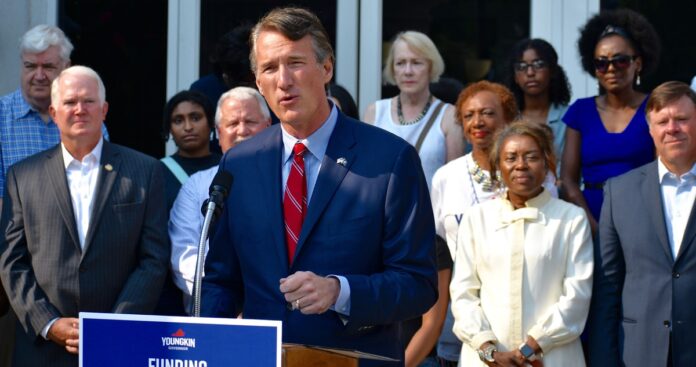Governor Glenn Youngkin has announced that according to the Bureau of Labor Statistics’ (BLS) Current Employment Statistics Survey (“CES” or “establishment survey”) data, Virginia’s nonfarm payroll employment edged up 500 over-the-month to 4,272,700, a 47,900 increase since April 2024. Since January 2022, the CES job count has increased by 268,100.
“In addition to the 500 nonfarm payroll jobs added in April, March’s positive revision includes another 800 jobs,” said Governor Glenn Youngkin. “This report underscores the resiliency of Virginia’s labor market and the need for us to continue our pro-growth policies that have seen record investment by companies wanting to be part of Virginia’s future.”
According to the BLS Local Area Unemployment Statistics (“LAUS”, or “the household survey”), Virginia’s seasonally adjusted unemployment rate in April increased by 0.1 percentage points to 3.3 percent, which is 0.5 percentage points above the rate from a year ago and 0.9 percentage points below the national rate, which remained unchanged at 4.2 percent.
The Commonwealth’s labor force participation rate decreased by 0.1 percentage points to 65.4 percent in April, 2.8 percentage points higher than the national rate. The labor force participation rate measures the proportion of the civilian population age 16 and older that is employed or actively looking for work.
The labor force decreased by 7,540 to 4,579,104 as the number of unemployed residents increased by 6,305 to 151,942. The number of employed residents decreased by 13,845 to 4,427,162.
“Despite a dip in overall labor force numbers, businesses across Virginia are still adding jobs. We’re working closely with industries to support expansion and investment that will drive long-term job creation,” said Secretary of Labor Bryan Slater. “Virginia continues to attract and retain high-quality employers. The growth in nonfarm payroll employment is a sign that companies remain confident in our workforce and economy.”
The CES survey uses payroll records of establishment employers and is designed to provide a count of jobs for which the employer pays unemployment insurance. The LAUS survey is based on household interviews conducted each month for the Bureau of Labor Statistics and provides comprehensive data on the labor force, including those who are employed and unemployed. Establishment survey data reflects changes due to updated seasonal adjustment factors, and industry classification conversions (“North American Industry Classification System” or “NAICS”), as part of the annual benchmarking process.
The household survey only distinguishes between whether a person is employed or unemployed, whereas CES counts each employee that is on an employer’s payroll. CES excludes business owners, self-employed individuals, unpaid volunteers and private household workers, and those on unpaid leave or not working because of a labor dispute.



